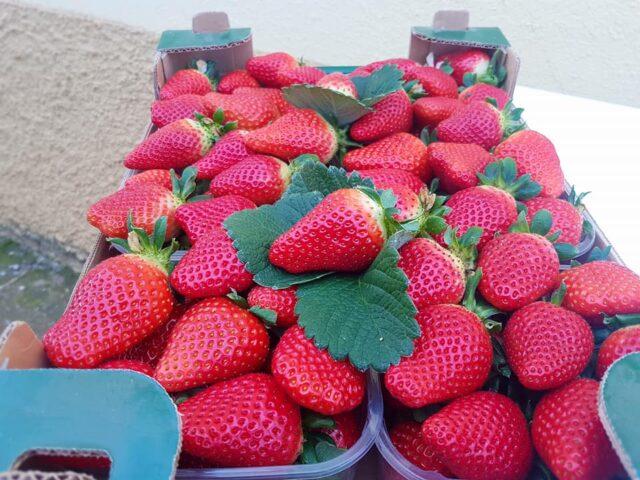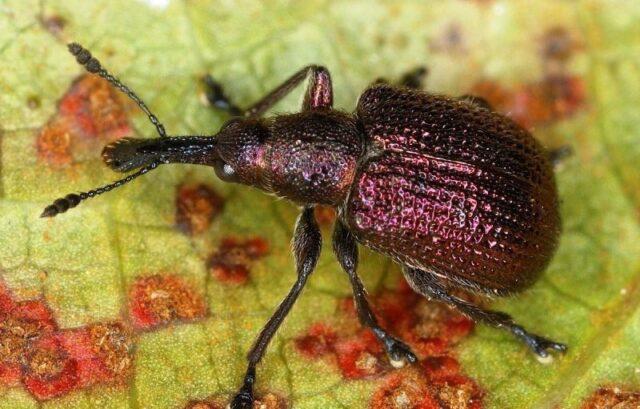Content
Strawberry Marisol is a productive and easy-to-care garden variety. Before planting a plant in your summer cottage, you need to study its characteristics and features.
Origin story
Marisol is one of the newest strawberry varieties from the Italian company Nova Siri Genetics. During the selection process, parental varieties with high resistance to fungal diseases and unfavorable conditions were used.

Marisol strawberries entered the wide Russian market in 2017-2018
Cultivation of Marisol strawberries in their homeland in the Mediterranean began in 2015. The variety demonstrated good productivity, so the area under it was significantly expanded in the next season.
Characteristics and description of Marisol strawberries
Marisol is a tall plant up to 30-40 cm with strong and durable spreading flower stalks.The leaves of the variety are dark green and large.
The variety produces an average number of whiskers throughout cultivation. Most of them are located at a distance of 5-10 cm from the mother bush.
Appearance and taste of berries
The Marisol variety produces bright red berries with an elongated conical shape. The weight of the fruit is 25-30 g, and the harvest is quite uniform. There are no sharp differences in weight and size between berries collected from the same bush.
Strawberries of Italian selection give off a pleasant fragrant aroma. The pulp of the fruit is dense and fleshy, without voids, and bright red in color. The berries are very sugary, with dessert properties, at the same time they have good keeping quality and can be transported over long distances.

In hot weather, Marisol fruits become darker in color.
Ripening period and yield of Marisol strawberries
The Marisol variety ripens in the mid-early period and produces a harvest from early June to mid-July, depending on the growing region. In warm regions, strawberries develop faster; in temperate climates, they enter the fruiting phase later.
The yield of the variety is quite modest. In the warm Mediterranean climate, Marisol produces an average of 800 g of berries per bush. But in most regions of Russia the figures are lower - up to 500 g of fruit.
Frost resistance
In its homeland, in the Mediterranean, Marisol is considered a cold-resistant variety, able to withstand temperatures down to -10 °C. With good insulation of the roots, the plant suffers slightly from frost and shows a minimum of attacks.
At the same time, Italian strawberries cope poorly with severe cold snaps in Russia and often die. It is recommended to grow it in the southern regions or in closed heated greenhouses in a temperate climate.
Resistance to diseases and pests
Strawberries Marisol were bred by breeders based on varieties with high immunity. The plant rarely suffers from fungal diseases and insects, although unfavorable external conditions can negatively affect the development of berry bushes.
The danger for Marisol in the garden is:
- powdery mildew is a fungal disease that leaves a light, dry coating on the leaves;
Powdery mildew often develops on strawberries in high humidity conditions.
- root rot - in poorly drained soil, Marisol may suffer from botrytis and late blight;
Strawberry root rot can be recognized by browning of the leaves and wilting of the stem.
The health of the Marisol variety is also harmed by parasitic insects. Berry bushes are especially often affected by:
- weevil - a pest that eats up plant buds in late spring and early summer;
When affected by weevil, strawberry fruiting deteriorates
- root nematode - the insect often appears on depleted “tired” soils;
The nematode quickly provokes the death of the roots of Marisol strawberries
- aphids - a garden pest feeds on the juice of the green parts of strawberries and leads to their deformation and withering of the flowers;
Aphids on Marisol strawberries often appear when there are ants in the area
- slugs - gastropods eat low-lying leaves of the plant.
Slugs attack strawberries in wet and warm weather
The fight against diseases of the strawberry variety Marisol is carried out using potassium permanganate and systemic fungicides. You can remove pests with mustard infusion or a solution of laundry soap. To prevent diseases, it is necessary to plant the crop in sunny places with well-drained soil and regularly mulch the soil.
Pros and cons of the variety
Marisol strawberries are valued by gardeners for their good immunity and excellent taste. But at the same time, the variety has disadvantages, which are especially pronounced in temperate climates.
Pros: · fairly large and weighty berries; · very high sugar content; · bright pleasant aroma of ripe fruits; · low requirements for the level of soil fertility; · high resistance to pests and fungi; · uniform yields. | Minuses: · average frost resistance in Russian conditions; · poor tolerance to high humidity - fruits begin to rot; · low yields. |
Italian strawberries Marisol are especially often killed by return frosts. In spring, it is recommended not to rush into planting the variety in open ground.
Landing rules
Marisol strawberry seeds are sown for seedlings in early March. The landing algorithm looks like this:
- For strawberry grains, prepare a nutritious but light soil consisting of humus and sand with the addition of garden soil.
- Spread the seeds in the soil at short intervals and place them in a cool place under a film for three days.
- Transfer the box to a well-lit room and, with regular moisture, germinate until green seedlings appear.
- Remove the cover and move the seedlings to a warm, sunny windowsill.
The grown seedlings are transferred to the ground in May after the return frosts have passed.

Marisol has long peduncles, so it is recommended to grow the variety in raised beds
Features of care
When growing the Marisol variety, you need to pay attention to several nuances.
- Watering. Italian strawberries are moistened abundantly 2-3 times a week during the dry season, as well as during flowering and fruit formation.
- Feeding. In the spring, Marisol is treated with a solution of bird droppings or cow manure, in May it is sprayed with an infusion of nettle tops, and after fruiting, phosphorus-potassium mixtures are added to the soil.
- Loosening and weeding. In order for the Italian variety to develop well, it is necessary to regularly remove weeds from the beds. After each watering, loosen the soil; this should be done with caution, to a depth of no more than 3 cm.
When growing the Marisol strawberry variety, it is important to regularly remove growing mustache from the bushes. With the onset of autumn, faded leaves on the plant are cut off and the plantings are thinned out, and then the beds are covered with agrofibre and spruce branches.
Reproduction methods
You can increase the population of Marisol strawberries in your summer cottage not only by seeds, but also by vegetative methods.
- Reproduction by mustache. Select several healthy plants from the garden bed, trim the flower stalks, and feed the strawberries with nitrogen throughout the season. When the mustache grows, it leaves rosettes of the first and second order. They are dug in and watered abundantly, and after rooting they are separated from the main bush.
- Reproduction by division. Overgrown Marisol strawberries can be cut along the rhizome into 2-3 parts. Each division with developed feeding shoots and several leaves is transferred to prepared new places.Advice! For propagation by mustaches, it is recommended to leave free space between the beds in advance.
Reproduction by division is carried out for bushes older than three years
Conclusion
Strawberry Marisol is a young Italian variety with dessert taste.The variety is highly resistant to fungi, but often freezes when overwintering in the open ground of the middle zone.
Reviews from gardeners about Marisol strawberries















